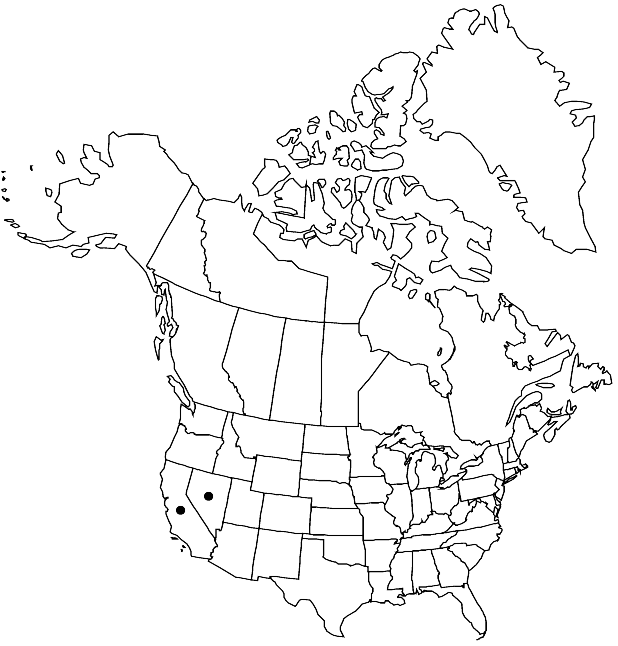Caulanthus glaucus
Proc. Amer. Acad. Arts 17: 364. 1882.
Perennials; glabrous throughout. Stems erect or ascending, unbranched or branched distally, 3–12 dm. Basal leaves not rosulate; petiole 1–8 cm; blade broadly obovate or oblong to elliptic, 2–10 cm × 20–120 mm, margins usually entire, rarely coarsely dentate-sinuate. Cauline leaves (distalmost) shortly petiolate; blade lanceolate to linear, 1–3.5 cm × 3–10 mm, margins entire. Racemes (densely flowered), without a terminal cluster of sterile flowers. Fruiting pedicels ascending, 5–35 mm. Flowers: sepals erect, (purplish or green to yellowish green), lanceolate, 7–12 × 2–3 mm (equal); petals purple or yellowish green, (not or faintly veined),11–17.5 mm, blade 3–6 × 1.8–2.7 mm, not crisped, claw narrowly oblong to narrowly oblanceolate, 8–12 × 3–4 mm; filaments tetradynamous, median pairs 3.5–8 mm, lateral pair 2–7 mm; anthers narrowly oblong, equal, 3.5–4.5 mm. Fruits divaricate to ascending (often distinctly curved), terete, 4.5–15.5 cm × 1–1.6 mm; valves obscurely veined; ovules 180–210 per ovary; style 0.2–1 mm; stigma strongly 2-lobed (lobes 0.9–1.5 mm, connivent, opposite replum). Seeds 1–2 × 0.8–1.2 mm. 2n = 20.
Phenology: Flowering Apr–Jun.
Habitat: Sagebrush scrub, dry slopes and rocky outcrops
Elevation: 1500-2400 m
Discussion
Of conservation concern.
Caulanthus glaucus is known in California from Inyo and Mono counties and in Nevada from Esmeralda, Mineral, and Nye counties.
Selected References
None.
Lower Taxa
"elongated" is not a number."thick" is not a number."dm" is not declared as a valid unit of measurement for this property.
